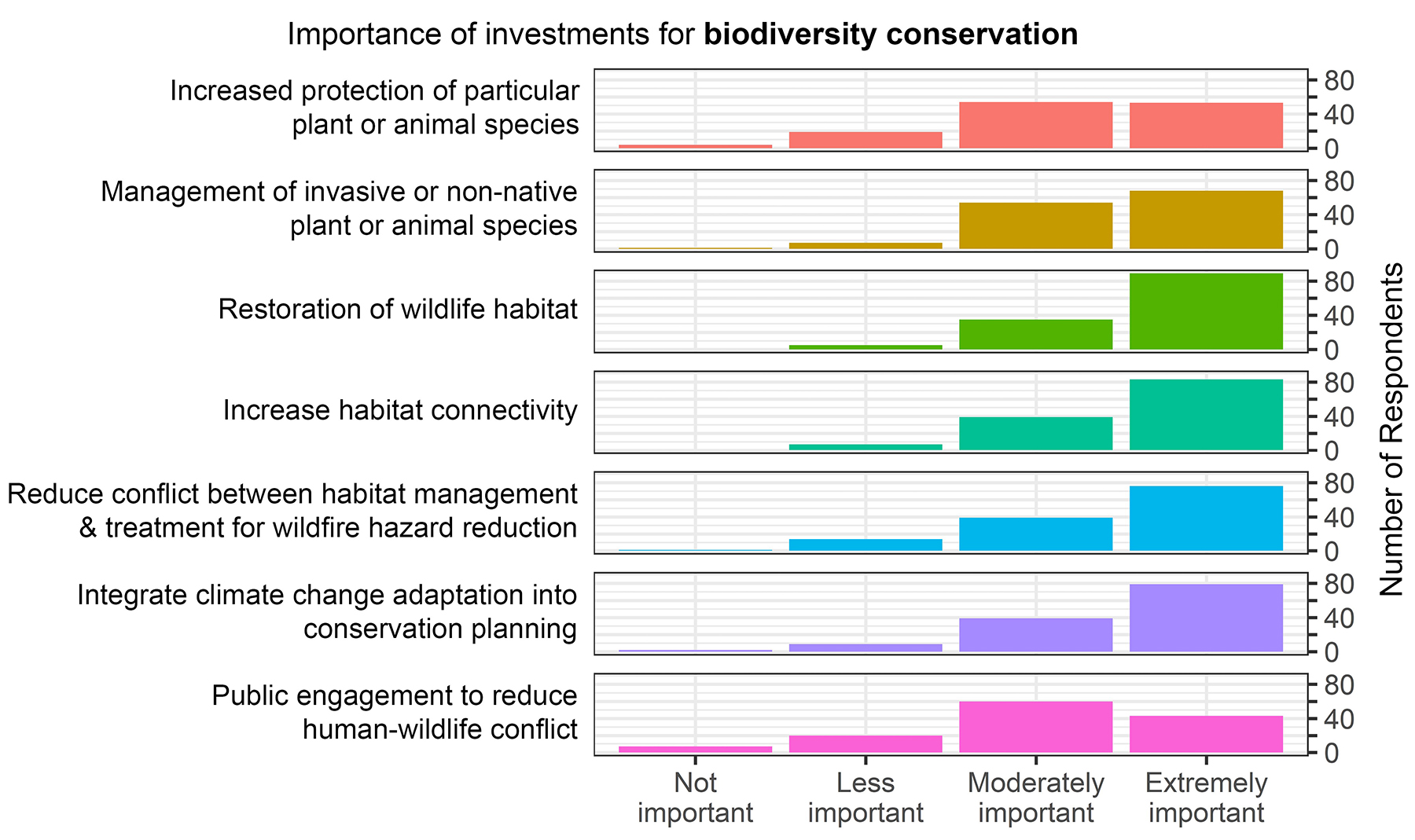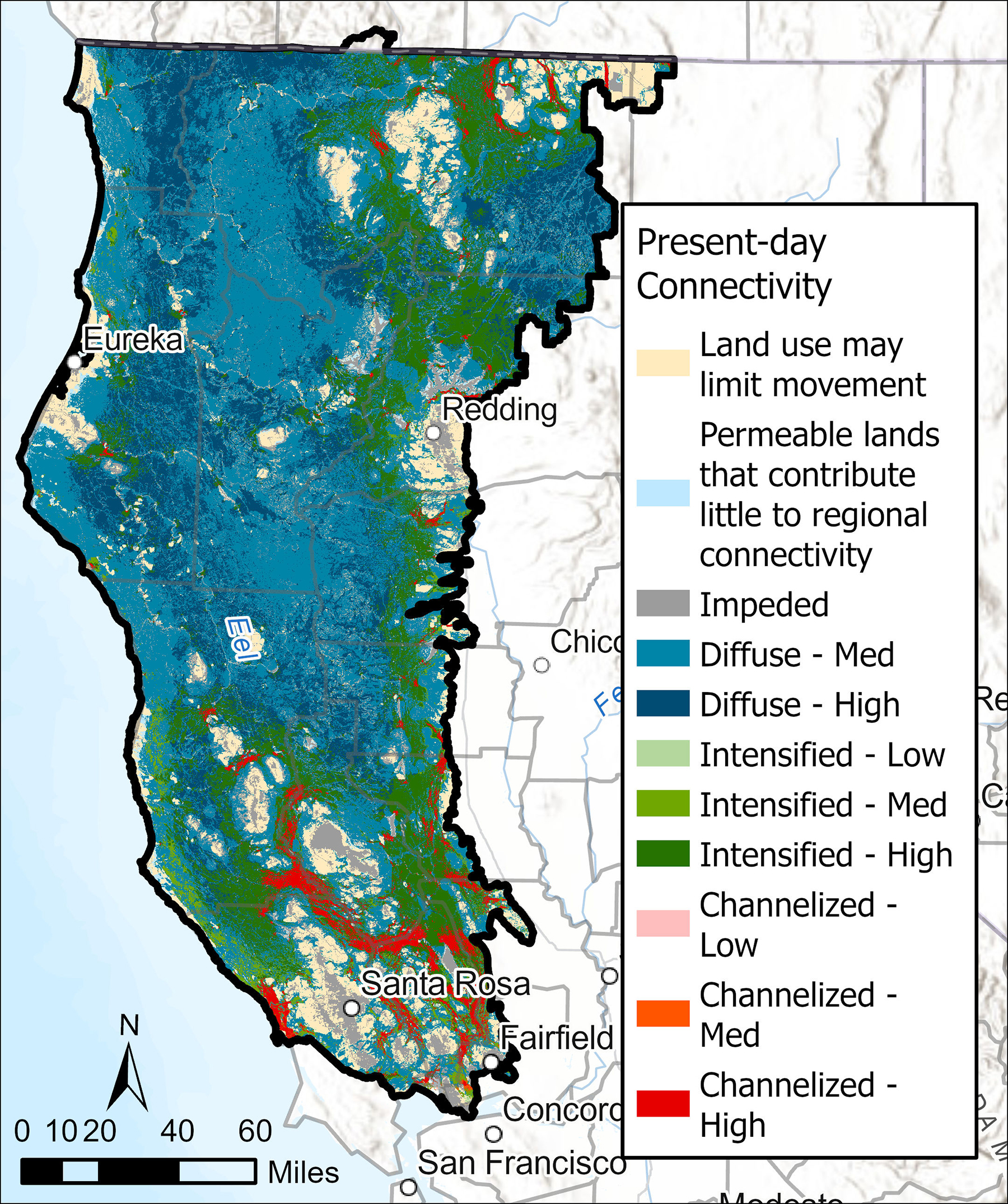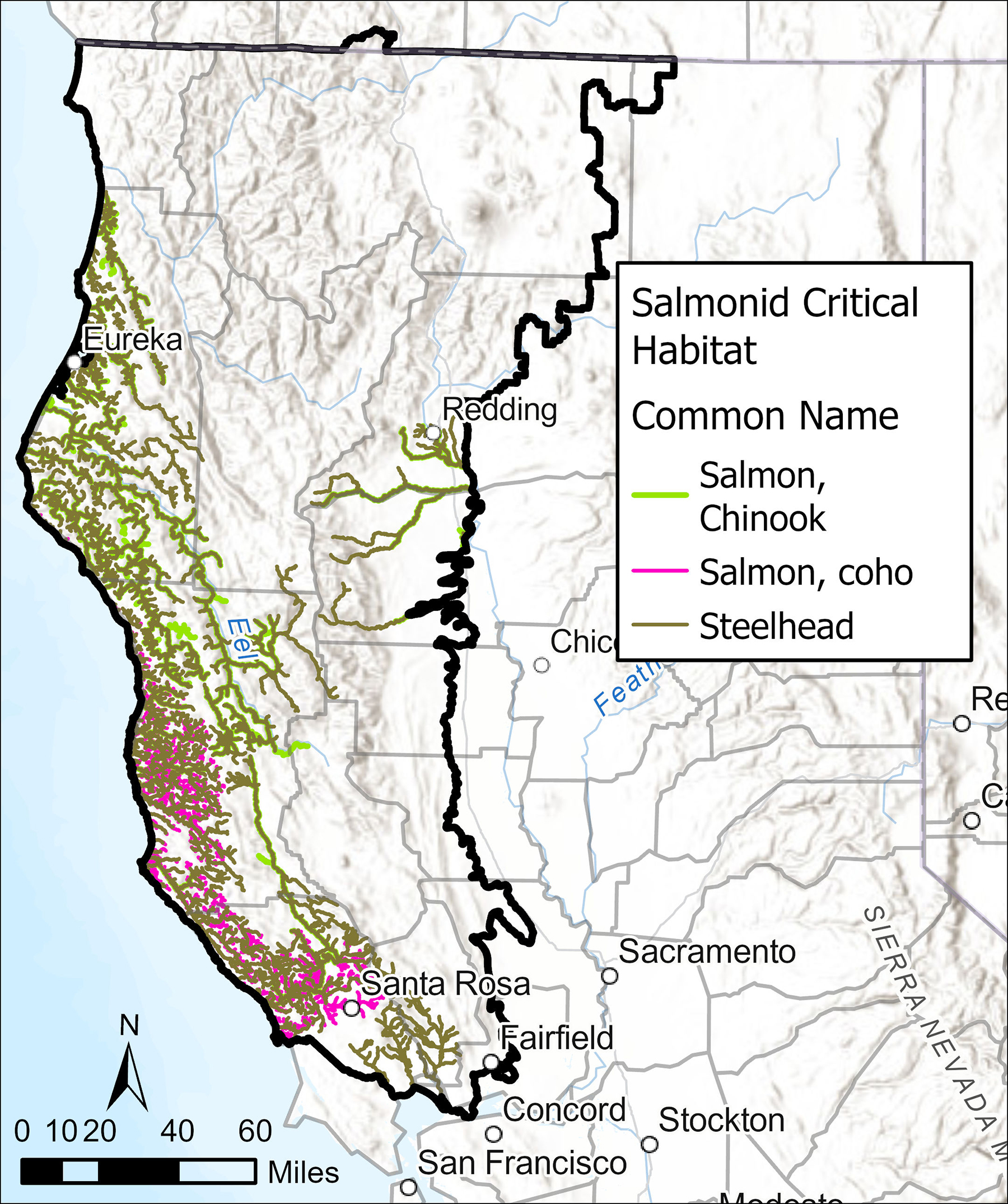Northern California Regional Profile
Biodiversity Conservation

photo credit: Harry Morse, California Department of Fish and Wildlife
Overview
The varied ecosystems of the Northern California region support a high diversity of plant and animal species. Some of the rarer species have become well-known for their outsized role in shaping forest management in the region [see ‘Healthy and Resilient Forests’]. For example, old-growth forest is heavily protected to help conserve endangered species, such as northern spotted owl, marbled murrelet, and Humboldt marten, that depend on this habitat. These regulations have been extremely controversial for the region, in large part because of the new restrictions that they imposed on the timber industry that was the economic lifeblood of many North Coast communities. More recently, these regulations have also come under scrutiny from additional stakeholder groups that are finding that historic conservation efforts have not been effective because the species that they were intended to protect are still declining. There is increasing concern that historic management regulations that targeted single species do not allow land managers to respond to the current challenges posed by climate change and altered disturbance regimes, and revised approaches that allow for more holistic ecosystem management are currently being considered as land management plans are updated [see ‘‘Healthy and Resilient Forests’].
In addition to its special terrestrial wildlife, the region is also home to significant populations of anadromous fish, including Chinook salmon, Coho salmon and steelhead trout. Much of the region’s historic fish populations has been lost as a result of farming, ranching, timber harvesting, mining, overfishing, dams, and climate change. However, there are strong efforts to conserve remaining populations. One notable effort that has made recent headway is the Klamath River dam removal. This demolition of four hydroelectric dams is the largest dam removal project in United States history and is expected to reopen more than 400 miles of habitat for endangered fish. Breaking ground on this project represents the culmination of decades of advocacy by regional Tribes, including the Karuk, Yurok, Hoopa, and others, whose cultural identity and food security has traditionally been tied to the Klamath River, and was achieved through partnership with conservationists, agencies, scientists, and other stakeholders. This is a monumental conservation achievement; however, fish populations in the region are also threatened by wildfire-related hazards and water rights conflicts [see ‘Water Security’].
Similar to other regions of California, many Northern California stakeholders are concerned that laws and regulations that are intended to protect sensitive species can conversely have the negative effect of impeding management activities that would increase ecosystem health and make habitat more resilient to disturbance. Environmental compliance can require extensive wildlife monitoring that imposes higher costs and longer timelines on projects. This can lead to projects becoming too expensive to pursue, and in some cases, wildfire has impacted project areas before planned vegetation treatments could be implemented. Laws protecting endangered species from harm by human actions can be a barrier to implementing vegetation treatments that could critically benefit the species habitat.
Relatedly, a significant number of watercourses in the Northern California region have been designated Wild and Scenic Rivers, including the Eel, Klamath, and Trinity River Systems. This designation carries additional regulations intended to protect these rivers and the ecosystem services that they provide. However, it can also make it difficult to do fuels reduction treatments in the riparian area that are needed to mitigate wildfire hazard for both the ecosystem and nearby communities.
In general, stakeholders in the region perceive that there is a need to balance conservation approaches that focus on single species or a specific part of a landscape with more holistic ecosystem management. It is also becoming increasingly important to ameliorate regulatory barriers to increase the pace and scale of ecologically-beneficial projects in response to the current wildfire crisis. In many cases, it will continue to be necessary to reconcile biodiversity conservation interests with other regional priorities because some actions that increase the safety of human communities, such as implementing fuel breaks, may be detrimental to wildlife habitat. However, many of the actions that increase community resilience can also help to increase ecosystem health by preventing higher severity fires than the ecosystem was adapted for or providing other ecological benefits [see ‘Water Security’].
Stakeholder Perspectives

Most survey respondents rated restoring wildlife habitat and increasing habitat connectivity as extremely important. Public engagement to reduce human-wildlife conflict was considered on average to be less of a priority than other potential areas of investment, but all potential areas of investment for achieving biodiversity conservation were considered on average to be at least moderately important.
Resource Conditions


The present day connectivity metric (top) characterizes the potential for species’ movement across the landscape based on the presence of impediments like development and agricultural land use. The metrics are classified by magnitude (high, medium and low) as well as categories that indicate whether the flow of movement is less or greater than would be expected in the absence of land use barriers. “Diffuse” connectivity areas are broadly permeable to animal movement. “Channelized” and “intensified” categories indicate areas where animal movement is restricted by surrounding land uses and thus the movement pathways that remain available experience higher use. Channelized pathways provide particularly critical linkages across the landscape. Considering the rural nature of Northern California, it is not surprising that much of the region provides diffuse connectivity, though there is a lot of habitat along the eastern part of the region where connectivity is intensified, most likely due to agriculture. In contrast, there are some highly channelized areas in the southern part of the region where human population density is higher. Chinook salmon, Coho salmon, and populations of steelhead trout in Northern California are all listed as threatened. Critical habitat (bottom) is the area within a species’ geographic range that includes the features most essential to species conservation. Critical habitat can be used to identify locations in particular need of special management or protection; its designation triggers additional environmental regulation intended to protect damage or destruction. In Northern California, steelhead trout critical habitat segments run nearly to the northern border; coho salmon segments are primarily found in Mendocino and Sonoma Counties, while Chinook salmon critical habitat is found primarily in Humboldt and Mendocino Counties.
